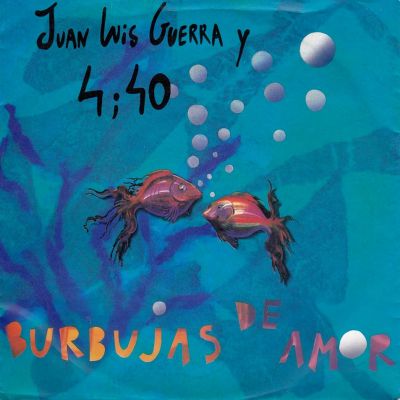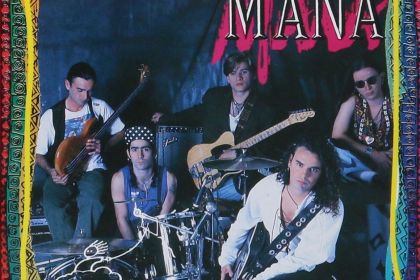SONGWRITER
Burbujas de Amor: playful and saucy lyrics by Juan Luis Guerra

Burbujas de Amor CD cover
Burbujas de Amor is one of the best-known songs by Juan Luis Guerra, a Dominican pop singer and accomplished songwriter who trained as a composer in the US. The track was released on the 1990 album Bachata Rosa, which brought the bachata dance style to the forefront of Latin pop music.
Born in the mid-20th century as a mixture of bolero and son genres, the bachata style blended the elements of Spanish guitar, indigenous Taino, and African music to highlight the cultural diversity of the Dominican population. Originating in rural working areas, bachata gradually spread into urban culture, invariably remaining the music of the lower classes until it gained international fame, largely thanks to the efforts of Guerra.
The lyrics of Burbujas de Amor (lit. meaning Bubbles of Love) are romantic and rather sexual in nature, reflecting a general trend for the genre. The narrator, in an ironic and slightly shameless manner, wants to turn into a fish so that he can touch his passion with his mouth and blow bubbles of love all night.
Listen to Burbujas de Amor by Juan Luis Guerra and 4.40:
Compositionally, Burbujas de Amor clearly follows the canons of tonal theory by combining Ionian major and Phrygian minor modes. In the harmonic analysis of the song's chord chains, the scale degrees (denoted with Roman numerals) show the following progressions in the key of C major: C–G–Dm7–F–G–F–G or I–V–ii7–IV–V–IV–V.
This typical chord progression ends with a powerful cadence, in this case the double-repeating F–G, to juxtapose subdominant and dominant harmonic functions and thereby generate the expectation of the C tonic chord that appears at the beginning of the next stanza.
The use of the Phrygian mode perfectly diversifies the lyrical narrative, although it is observed only in one verse:
Una noche
Para hundirnos hasta el fin
Cara a cara, beso a beso
Y vivir por siempre
Mojado en ti
This culminating stanza is accompanied by the following progressions in G Phrygian:
- A♭–Bb7–Gm–Cm–Bb or III–II7–i–iv–II
- A♭–Bb7–Gm–Cm–Gm–Fm–Bb7 or III–II7–i–iv–vii–II7
Notice how often the Bb supertonic chord, rooted in the second scale degree, appears here. This major chord is the highlight of the Phrygian mode and is often referred to as the Neapolitan chord.
Learn more about the structure of these diatonic musical modes explained through the harmonic analysis of popular songs in the following articles:
- 6 songs to unpack Ionian mode and the major scale
- 9 Beatles songs that combine harmonic major with Ionian mode
- Popular songs featuring Phrygian mode and Neapolitan chord
- The Andalusian cadence: distinct chord progression of flamenco that captivated all pop music genres



